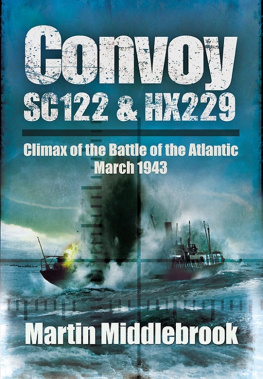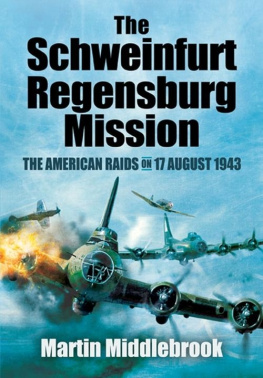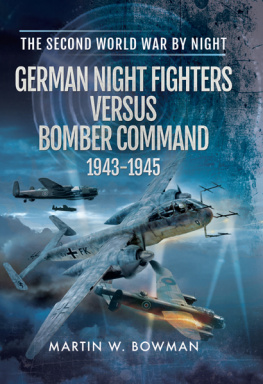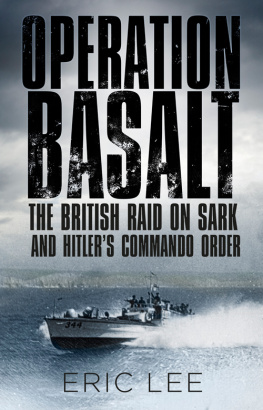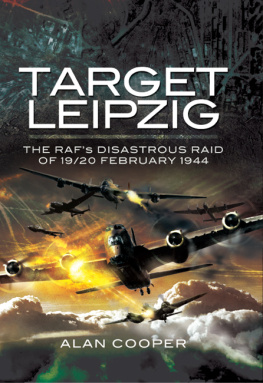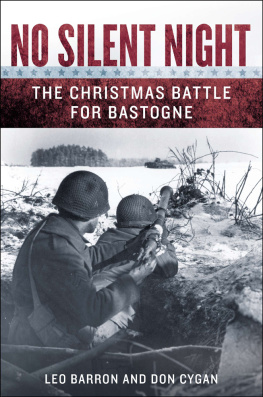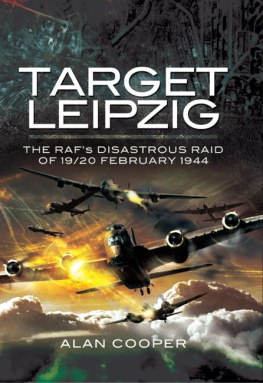THE
PEENEMNDE
RAID
Martin Middlebrook is a
Fellow of the Royal Historical Society.
THE
PEENEMNDE
RAID
THE NIGHT OF 1718 AUGUST 1943
MARTIN MIDDLEBROOK
By the same Author
The First Day on the Somme
The Battle of Hamburg
Convoy
The Schweinfurt-Regensburg Raid
Battleship (with Chris Everitt)
The Somme Battlefields (with Mary Middlebrook)
The Sinking of the Prince of Wales and Repulse (with Patrick Mahoney)
Arnhem 1944
The Argentine Fight for the Falklands
Your Country Needs You
The North Midlands Territorials Go To War
First published in Great Britain in 1982 by Allen Lane.
Reprinted in 2000 by Cassell Military Paperbacks.
Published in this format in 2006 by
Pen & Sword Aviation
An imprint of
Pen & Sword Books Ltd
47 Church Street
Barnsley
South Yorkshire
S70 2AS
Copyright Martin Middlebrook, 1982, 2000, 2006
ISBN 1 84415 336 3
The right of Martin Middlebrook to be identified as Author of this work has been
asserted by him in accordance with the Copyright, Designs and Patents Act 1988.
A CIP catalogue record for this book is
available from the British Library
All rights reserved. No part of this book may be reproduced or transmitted in any
form or by any means, electronic or mechanical including photocopying, recording or
by any information storage and retrieval system, without
permission from the Publisher in writing.
Printed and bound in England
By CPI UK
Pen & Sword Books Ltd incorporates the Imprints of Pen & Sword Aviation,
Pen & Sword Maritime, Pen & Sword Military, Wharncliffe Local history,
Pen & Sword Select, Pen & Sword Military Classics and Leo Cooper.
For a complete list of Pen & Sword titles please contact
PEN & SWORD BOOKS LIMITED
47 Church Street, Barnsley, South Yorkshire, S70 2AS, England
E-mail: enquiries@pen-and-sword.co.uk
Website: www.pen-and-sword.co.uk
Contents
| (The Deutsches Museum is in Munich.) |
| Maps by Reginald Piggott from preliminary drawings by Mary Middlebrook |
In the early evening of Friday 8 September 1944 three months after the Allied invasion of Normandy there was a violent explosion outside No. 13 Staveley Road, Chiswick, in west London. When the dust and debris had subsided, there was found in the roadway a crater thirty feet across and twenty feet deep. Three people who lived nearby were killed and seventeen more were injured.
The people of London had become used to German bombs and recently to flying bombs (sometimes called V-1s or Doodle Bugs), but this explosion had not been preceded by a warning siren and no one had heard either the sound of German bombers or the distinctive noise of a flying-bomb engine, for which all London ears listened intently at this period of the war. Many people had heard, however, an unusual, reverberating double boom immediately after the explosion at Chiswick and, a little later, a peculiar whooshing sound. Within a minute, there was a repetition of these strange events near Epping in Essex, twenty-five miles to the north-east of Chiswick, this time in open country, so that there were no casualties. The Epping explosion caused little comment and the Chiswick phenomenon was attributed to a faulty gas main. The authorities made little attempt to deny this explanation.
But the Chiswick explosion had been caused by three quarters of a ton of high explosive contained in the nose of a large rocket launched by a German artillery unit from a position in Holland, 200 miles away. The double boom heard after the explosion was the noise of the rocket breaking the sound barrier, and the whoosh that followed was created when the plunging missile travelling at over 2,000 miles per hour pushed its way through the denser air encountered as it approached the ground from a height of more than fifty miles. This event was a turning point in the history of warfare; the three people killed at Chiswick sixty-three-year-old Mrs Ada Harrison, three-year-old Rosemary Clarke, and Sapper Bernard Browning who had been on leave from the Royal Engineers were the first British victims of the operational use of military rockets. The Chiswick rocket was not the first to be fired in anger, however; at 7.28 that morning a similar rocket, dispatched from Holland in the direction of Paris, had exploded in a suburb, the name of which is not recorded in any Paris archive. Le Figaro states that six people died and forty-five were injured and that forty houses over a radius of 300 yards were damaged. The Paris press attributed the explosion to a V-1 flying bomb. The rockets continued to fall for the next seven months. They always arrived without warning. There never was any defence.
Their introduction did not come as a surprise to the Allied authorities, who had been making strenuous efforts to delay and frustrate the German rocket programme. Without these efforts, the terrible weapons would have struck many weeks earlier, and the ensuing campaign would have been longer and of greater intensity. It was not only civilians in London and other cities who benefited; even the success of the invasion of Normandy might have been imperilled had the German rockets come into operation at the time and in the numbers planned and if they had been fired against the Channel ports being used for the invasion.
The main Allied countermove against the rocket had been a raid by the Royal Air Force on a hitherto unbombed target on the Baltic coast of Germany. This target, Peenemnde, was the site of the experimental and development work carried out by the German rocket designers, and it was attacked at very great risk to the bomber crews in the early hours of 18 August 1943. This book is the story of that air operation. In preparing it, I have attempted to identify each major element in the story, proceeded to collect as much documentation as possible to provide a firm background, and, finally, searched for as many people as I could find who were participants in the raid.
The identification of the main groups of participants was easy: first the R.A.F. bomber crews who carried out the raid together with their commanders and the planning staffs; then their counterparts in the Luftwaffes defending fighter forces; and finally the many and diverse people whose work and homes were at Peenemnde. The documentary research for the R.A.F. side of the operation was also easy; but it was soon found that original documents both from Peenemnde itself and from the Luftwaffe units defending it are scarce. A framework for the Luftwaffe side can be constructed, however, from various scattered documents, and for Peenemnde itself one is lucky to have two books that are almost as valuable as prime sources: General Dornberger, the German military commander at Peenemnde, survived the war to write his memoirs, V-2 Der Schuss ins Weltall; and the English historian David Irving, after a classic research effort, produced his history of the German V-weapon programme, The Mares Nest, in 1964. I willingly acknowledge the use I made of these two books.
For me, however, the most interesting part of my preparation is always the contact made with those who took part in the events I wish to describe, and this book has been as fruitful as any. Suffice it at this point to say that it has been my pleasure to have met many representatives of every group of people involved and to have corresponded with many more: the reader will in turn meet many of them in the following pages. There are, I believe, no major gaps in the coverage of the main elements of the Peenemnde story.
Next page

